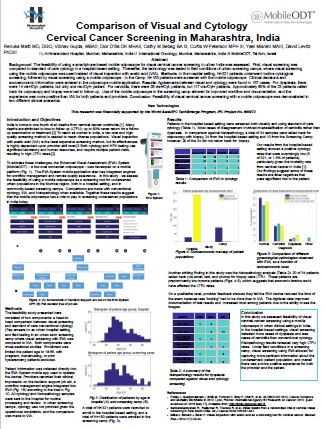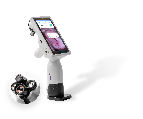Background: The feasibility of using a smartphone-based mobile colposcope for visual cervical cancer screening in urban India was assessed. First, visual screening was compared to standard of care cytology in a hospital-based setting. Thereafter, the technology was tested in field conditions of urban screening camps, where visual screening using the mobile colposcope was used instead of visual inspection with acetic acid (VIA).
Methods: In the hospital setting, N=321 patients underwent routine cytological screening, followed by visual screening using a mobile colposcope. In the Camp, N=150 patients were screened with the mobile colposcope. Clinical decisions and socioeconomic information were entered in the colposcope mobile application.
Results: Agreements between visual and cytology were found in 157 cases. For dysplasia, there were 14 vis+/Cyt- patients, but only one vis-/Cyt+ patient. For cervicitis, there were 29 vis+/Cyt- patients, but 117 vis-/Cyt+ patients. Approximately 60% of the 23 patients called back for colposcopy and biopsy were lost to follow up. Use of the mobile colposcope in the screening camp allowed for improved workflow and documentation, and the experience was more positive than VIA for both patients and providers.
Conclusion: Feasibility of visual cervical cancer screening with a mobile colposcope was demonstrated in two different clinical scenarios.








